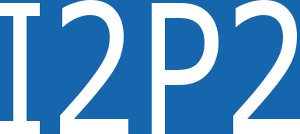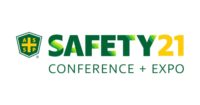 Prominent at this year’s AIHce were seminars and workshops reflecting the American Industrial Hygiene Association’s (AIHA) biennial membership survey listing top public policy issues of concern to AIHA members and the occupational and environmental health and safety (OEHS) profession over the next two years.
Prominent at this year’s AIHce were seminars and workshops reflecting the American Industrial Hygiene Association’s (AIHA) biennial membership survey listing top public policy issues of concern to AIHA members and the occupational and environmental health and safety (OEHS) profession over the next two years.
Overall top issues for 2013-2014:
Permissible Exposure Limits (PELs) – Updating
The Occupational Safety and Health Administration (OSHA) PELs are consensus-based limits that indicate how long an individual can be exposed to a particular substance without experiencing harmful effects. The occupational health and safety profession considers PELs to be one of the most basic tools needed to protect workers. However, many PELs have not been updated since the 1960s and 1970s. Science in this area has matured, but the PELs have not. AIHA continues to work with OSHA, Congress and others to reach a consensus on the best way to update the PELs.
Injury and Illness Prevention Program (I2P2)
OSHA is developing a rule to require employers to establish and maintain an Injury and Illness Prevention Program. It involves identifying and controlling hazards as well as planning, implementing, evaluating and improving processes and activities that protect employee safety and health. AIHA has been providing leadership in the development of OHS management science and practice since its inception. AIHA supports the need and importance in defining effective occupational health and safety programs and the acceptance in the IH and safety community that hazard assessment and implementation of a written safety and health program are parts of minimum acceptable professional practice on any work site.
Professional Recognition/Title Protection
This issue continues to appear in the top public policy issues for AIHA, as it has since 1993. Professional recognition/title protection allows industrial hygienists and others who have met minimum educational and experience requirements (such as certified industrial hygienists and certified safety professionals) to be legally defined and recognized as competent to perform certain work without the need for additional
requirements. Also included in this category is the new AIHA Registry – a listing of qualified individuals who demonstrate competency in a specialty area of industrial hygiene or related environmental health and safety practice. An area of concern to AIHA is the continued influx of occupational health and safety titles awarded by non-accredited bodies and the attempt to recognize these titles in various policy making activities. AIHA continues to educate federal and state policymakers about the importance of recognizing those professionals who have received education resulting in registration or certification from nationally recognized and accredited organizations.
OSHA Reform - NIOSH Recognition - Appropriations
Each year Congress introduces and considers legislation to amend the Occupational Safety and Health Act. This legislation addresses many parts of the OSH Act, including criminal penalties, whistleblower protections, expansion of coverage, and the Voluntary Protection Program.
AIHA supports efforts to review and amend the OSH Act if changes provide added protection for workers. AIHA also supports efforts to protect the National Institute for Occupational Safety and Health (NIOSH) from attempts to diminish the importance of the Institute and its research. AIHA supports appropriations to adequately fund OSHA, MSHA and NIOSH.
Nanotechnology
The increased manipulation of matter on a near-atomic scale to produce new structures, materials and devices creates a new potential hazard.
As with any new technology, the earliest and most extensive exposure to hazards is most likely to occur in the workplace. Workers within nanotechnology industries have the potential to be exposed to uniquely engineered materials, yet the occupational health risks associated with this technology is not yet clearly understood. AIHA supports efforts by OSHA, EPA and NIOSH (the leading federal agency conducting research and providing guidance on the occupational safety and health implications and applications of nanotechnology) to determine the most efficient way to address this new technology.
Laboratory Accreditation
Accredited laboratories are the best way to ensure that test samples of potential workplace hazards are analyzed correctly. AIHA continues working to see that the AIHA laboratory accreditation program is internationally recognized and noted in federal and state legislation and regulation as one of the programs with recognition and acceptance.
Most important issues identified by AIHA members for the Occupational Safety and Health Administration (OSHA):
- Permissible Exposure Limits (PELs) - Updating
- Injury and Illness Prevention Program (I2P2)
- Hazard Communication - Globally Harmonized System (GHS) for Classification/Labeling of Chemicals
- Nanotechnology
- Combustible Dust
- Silica
- Noise/Hearing



